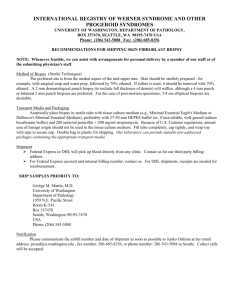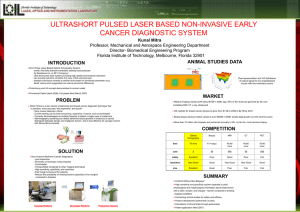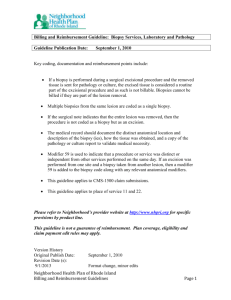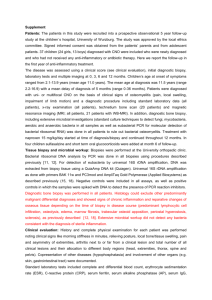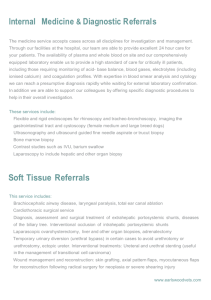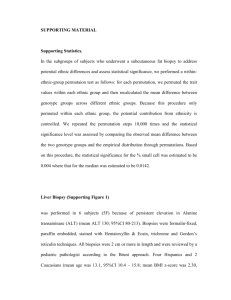FEATURES
advertisement
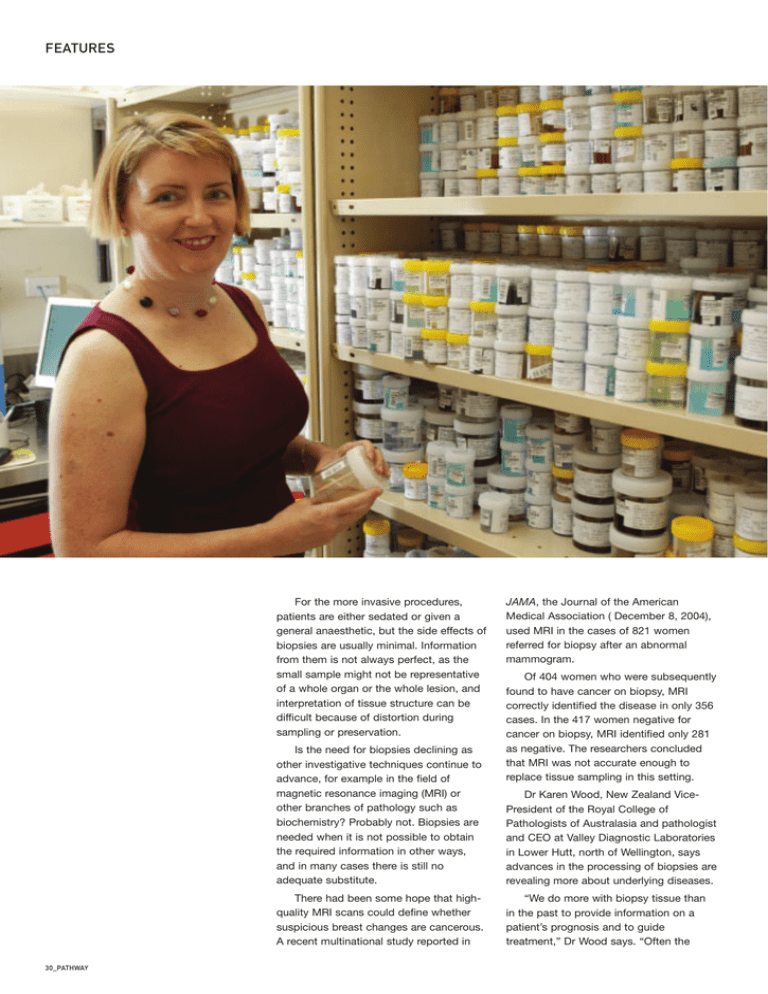
FEATURES For the more invasive procedures, patients are either sedated or given a general anaesthetic, but the side effects of biopsies are usually minimal. Information from them is not always perfect, as the small sample might not be representative of a whole organ or the whole lesion, and interpretation of tissue structure can be difficult because of distortion during sampling or preservation. Is the need for biopsies declining as other investigative techniques continue to advance, for example in the field of magnetic resonance imaging (MRI) or other branches of pathology such as biochemistry? Probably not. Biopsies are needed when it is not possible to obtain the required information in other ways, and in many cases there is still no adequate substitute. There had been some hope that highquality MRI scans could define whether suspicious breast changes are cancerous. A recent multinational study reported in 30_PATHWAY JAMA, the Journal of the American Medical Association ( December 8, 2004), used MRI in the cases of 821 women referred for biopsy after an abnormal mammogram. Of 404 women who were subsequently found to have cancer on biopsy, MRI correctly identified the disease in only 356 cases. In the 417 women negative for cancer on biopsy, MRI identified only 281 as negative. The researchers concluded that MRI was not accurate enough to replace tissue sampling in this setting. Dr Karen Wood, New Zealand VicePresident of the Royal College of Pathologists of Australasia and pathologist and CEO at Valley Diagnostic Laboratories in Lower Hutt, north of Wellington, says advances in the processing of biopsies are revealing more about underlying diseases. “We do more with biopsy tissue than in the past to provide information on a patient’s prognosis and to guide treatment,” Dr Wood says. “Often the What’s happened to my biopsy? trict laws supplemented by S protocols within pathology laboratories, hospitals and other institutions control the disposal of tissues removed during surgery. The attitude of patients to their body parts varies widely, and is influenced by cultural norms as well as personal views and beliefs. Pieces of tissue removed for biopsy are generally very small, and have not attracted the same attention. Once removed, they are preserved and mounted in wax blocks to allow them to be handled and for thin slices to be Today, virtually every tissue in the body is accessible for a biopsy. Dr Edwina Duhig with some samples. cut for staining and microscopic examination. The slices are mounted on glass slides that for medicolegal reasons might have to be stored by the pathology information we provide is very positive for patients who are otherwise facing bad news.” has spread to the lung can be difficult. In patients with breast cancer, for example, it is now routine to analyse the characteristics of tumour cells using antibody-based stains, revealing specific features such as oestrogen and progesterone receptors. If the receptors are present, then the outlook is better than if they are absent. the tumour originated in the Oestrogen receptors in breast cancers from postmenopausal women also indicate that the anti-oestrogen drug tamoxifen is likely to be useful. Some breast cancers contain high levels of the molecule erbB2. In these cases, treatment response can be improved by including the drug trastuzumab (Herceptin) in the chemotherapy regimen. Colorectal cancer often spreads to other sites in the body, but distinguishing between, for instance, primary lung cancer and a secondary colorectal cancer that Checking tissue for distinctive CK7 and CK20 antigens will help determine whether gastrointestinal tract, and the information will guide the choice of treatment. New treatments are increasing, rather laboratory for many years. Perhaps the greatest practical concern for patients and their families is the anxiety often associated with having a biopsy taken and waiting for the results than reducing, the need for biopsies. – usually a matter of days. Those Basal cell carcinomas of the skin can now results can have extremely be treated with imiquimod cream if they important personal implications, are unsuitable for surgical removal. A such as confirming or ruling out a diagnosis is needed in advance, and is obtained by biopsy. Similarly, if skin lesions are treated by diagnosis of cancer. Pathologists are fully aware of other topical treatments, heat or freezing, the significance of their work for then it is necessary to obtain a biopsy patients, and seek consistently to diagnosis before the abnormal tissue is provide high standards of destroyed. diagnosis, clear communication with the treating doctors and the GPs NOTE: This article is available for patients at http://pathway.rcpa.edu.au best possible information to guide care. PATHWAY_31

